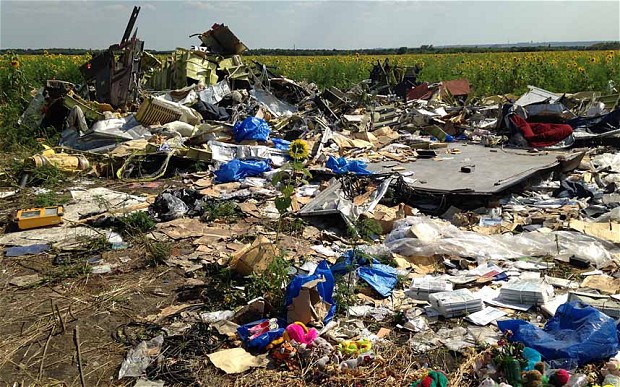By Martin Khor
New research is showing that air pollution is a powerful if silent killer, causing 6.5 million worldwide deaths as well as being the major cause of climate change.
Air pollution has emerged as a leading cause of deaths and serious ailments in the world. Emissions that cause air pollution and are Greenhouse Gases are also the main factor causing climate change.
Therefore, drastically reducing air pollution should now be treated as a top priority.
The seriousness of this problem was highlighted by the heavy smog that enveloped New Delhi for days at the beginning of November, forcing the government to declare an emergency, schools to be closed and a ban on construction work for several days.
The level of the harmful PM2.5 pollutants had almost reached 1,000 at some times in the Indian capital city, far above the safety level of 60.
Recent research shows that air pollution is the number one environmental cause of human deaths and kills more people annually worldwide than road accidents, violence, fires and wars combined.
This “silent killer” is not as dramatic or visible as car crashes, murders, terrorist attacks or natural disasters, but it is nevertheless even more dangerous as it contaminates vital organs, causing serious diseases and deaths to many millions of people.
Altogether 6.5 million people worldwide are estimated by the World Health Organization (WHO) to have died prematurely in 2012 because of air pollution.
This means that of the 56 million deaths worldwide in 2012, 11.6% or one in nine were attributable to air pollution.
In comparison, there were 5 million deaths from all injuries including from road accidents (1.3 million deaths), falls, fires, and war in 2012, according to WHO data.
Indeed, air pollution may have become one of the top killers. Tobacco use, usually described as the world’s leading preventable cause of death, is responsible for nearly 6 million deaths annually, or around 10% of total deaths.
Air pollution may have overtaken it as the world’s leading cause of death.
The WHO estimates that there are 4.3 million deaths attributable to indoor pollution and another 3.7 million deaths to outdoor pollution.
Because some deaths may be due to both outdoor and indoor pollution, it is not possible to add up the two figures to obtain the total deaths.
Thus in its latest estimate in September 2016, the WHO has explained that there were 6.5 million deaths from outdoor and indoor air pollution combined in 2012.
Young children are among the most vulnerable to the effects of air pollution. A new UNICEF study released on 31 October 2016 found air pollution is a major contributing factor in the deaths of around 600,000 children under five every year, and that around 2 billion children live in areas where outdoor air pollution exceeded the WHO air quality guidelines.
Besides its threat to human lives and health, air pollution is also the major cause of climate change as it is linked to much of the Greenhouse Gas emissions.
The Paris Agreement of the UN Climate Change Conference that came into force on 10 November aims to limit the rise of the average global temperature to 2 or 1.5 degrees Celsius above the pre-industrial era levels.
At the current rate of global emissions, and even at rates reduced by the Paris Agreement commitments, global warming will far exceed this limit, and thus the world faces potentially catastrophic effects to the global environment, food supplies and also human health.
Thus, air pollution ranks as the biggest threat to both human health and the environment. Reducing this pollution should therefore be at the top of the global agenda as well as national agendas.
Outdoor Air Pollution
At the end of September, the WHO for the first time published country-by-country details about the extent of outdoor air pollution and the deaths associated with it.
The study shows that 3 million premature deaths worldwide were linked to ambient or outdoor air pollution in 2012. Of this, 88% of the deaths were in developing countries and two out of three occurred in the Southeast Asia and the Western Pacific regions.
Two countries alone accounted for more than half of the total deaths — China with 1.03 million and India with 621,138.
Other high-numbered countries include Russia (140,851), Indonesia (61,792), Ukraine (54,507), Egypt (43,531), Nigeria (46,750), Pakistan (59,241), United States (38,043), Bangladesh (37,449), Turkey (32,668), Japan (30,790), the Philippines (28,696), Vietnam (27,340), Poland (26,589), Iran (26,267), Brazil (26,241) and Germany (26,160).
Most of the deaths attributable to outdoor air pollution were caused by non-communicable diseases, especially ischaemic heart diseases (36% of the total deaths), strokes (36%), lung cancer (14%), chronic obstructive pulmonary disease (8%), and acute lower respiratory infections (8%).
The situation is truly pervasive: 92% of the world’s population are exposed to the dangers of unsafe air quality as they live in places that do not meet the WHO health standard for outdoor air quality.
The world as a whole has an annual median exposure to outdoor mean annual concentration of PM2.5 of 39 microgram per cubic metre. This is four times above the WHO’s guideline limit of 10 microgram per cubic metre for PM2.5.
The regions with the highest outdoor air pollution rates are Eastern Mediterranean high-income countries (91 microgram per cubic metre of PM2.5), Eastern Mediterranean low and middle income countries (55), Southeast Asia (55), Western Pacific low and middle income countries (49) and Africa (32).
Countries with high incidence of outdoor air pollution include Saudi Arabia (108 microgram per cubic metre of PM2.5), Qatar (103), Egypt (93), Kuwait (75), Bangladesh (84), Cameroon (65), Mauritania (65), United Arab Emirates (64), India (62), Libya (61), Pakistan (60), Bahrain (60) and China (54).
The PM2.5 level is the annual median concentration of particulate matter of a diameter less than 2.5 micrometres. PM2.5 includes very fine (and thus the most damaging) particles of pollutants such as sulphate, nitrates, ammonia, sodium chloride, black carbon and mineral dust, which penetrate and lodge deep inside the lungs and in the cardiovascular system, posing the greatest health risks of developing cardiovascular and respiratory diseases and lung cancer.
Air quality is normally measured in terms of daily or annual mean concentrations of PM10 or PM2.5 particles (with diameter of 10 or 2.5 micrograms) per cubic metre of air volume.
(The WHO guidelines for particulate matter (PM) outdoor pollution is an annual mean of 10 microgram per cubic meter for particles below the size of 2.5 microns in diameter, and 20 microgram per cubic metre for particles below 10 microns in size.)
The world also suffered 84.9 million years of life lost in 2012, attributable to outdoor air pollution, according to the WHO report. Years of life lost is a measure of the extent of premature death compared to the normal expected life span.
Of the total years of life lost, 26% was due to lung cancer, 17% to stroke, 17% to acute respiratory disease, 16% to ischaemic heart disease and 8% to chronic obstructive pulmonary disease.
The WHO report “Ambient air pollution: a global assessment of exposure and burden of disease” was based on satellite data, air transport models and ground station monitors for more than 3000 rural and urban locations.
The study does not include indoor or household air pollution, which may be even more dangerous than outdoor air pollution.
Indoor Air Pollution
Worldwide, 4.3 million people die annually from indoor air pollution, mainly from stroke (34%), ischaemic heart disease (26%), chronic obstructive pulmonary disease (22%), pneumonia (12%) and lung cancer (6%).
The main form of the deadly household pollution is the use of solid fuels for cooking and heating. Nearly 3 billion poor people rely on wood, animal dung, charcoal, crop wastes and coal which are burned in highly polluting simple stoves or open fires.
The resulting pollution, which includes small soot particles that penetrate deep into the lungs, especially affects women and children who spend a lot of time near the kitchen or hearth.
In poorly ventilated homes, indoor smoke can be 100 times higher than the acceptable levels for fine particles, according to WHO. The use of kerosene lamps for lighting also exposes the families to very high levels of fine particles.
The emissions of black carbon and methane from the stoves also contribute to outdoor air pollution and increase climate change as both are powerful Greenhouse Gases.
The WHO has new indoor air quality guidelines for household fuel combustion and recommendations on types of fuels and technologies to protect health, in addition to guidelines on specific indoor pollutants. It will also do a study of indoor pollution and when the figures are published they will reveal the full problems caused by air pollution.
Author : Martin Khor is the Executive Director of the South Centre.











